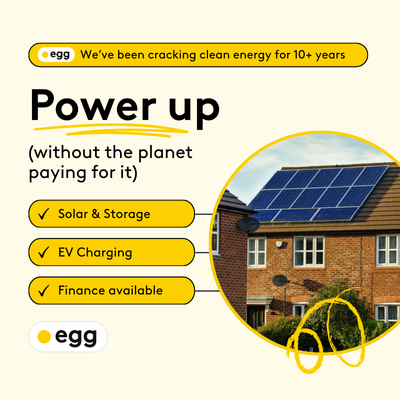How much more can we learn and then use ourselves from @transparent’s systems?
We’ve been offered some fascinating glimpses into @transparent’s solar and battery systems. This topic could go into either category.
My first question is how does he combine his off grid battery and solar system with some on grid systems? Do they connect to different buildings or parts of the house?
I’ve probably got more questions since the more I learn, the more I want to know in particular how people optimise their controls.
2kW + Growatt & 4kW +Sunnyboy PV on south-facing roof Solar thermal. 9.5kWh Givenergy battery with AC3. MVHR. Vaillant 7kW ASHP (very pleased with it) open system operating on WC
Here's a top-level system diagram @judith
Most of the 'mains' 240v stuff is running from the batteries.
There's a separate consumer unit for these off-grid supplies.
That leaves the usual distribution board (to the left) running just three circuits:
- supply to inverters to permit charging batteries from the grid
- EV charge point; I don't want to take charge from the household batteries and transfer it to the car battery instead!
- a minimal set of sockets and 'workshop' which provides light and power when the rest of the system is being rewired or maintained
For most of the year there's sufficient energy from solar panels to keep the batteries still charged above 10% by sunrise.
When the next day isn't going to provide enough sunshine, then the deficit can be derived from a grid-charge during the preceding night.
All of the systems are slightly more complex and flexible than the above diagram suggests.
For example I can switch some household circuits between grid-tied and off-grid operation.
This is ongoing work.
Everything is subject to modification and development.
I might pick up points from a forum discussion here, and change my mind about the approach I've taken.
Unlike most readers, I'm not just installing an 'off-grid system' and then leaving it to operate for the next decade+
Save energy... recycle electrons!
Wow!
I thought about your previous comments about having some of your system off-grid and was wondering if that meant separating parts of the 240V distribution aka ‘mains’. But it’s more complex than that.
I wish I could fit and leave for 10years or even 3. Every time I learn about new products I realise that there is a better way of doing things now. In particular wrt GivEnergy battery systems!
We could usefully have more panels possibly mounted nearer to vertical for winter supply and more battery storage but we don’t want to be clobbered with a DNO limit, since we want to use our solar not export it. And I can’t be bothered with cycling the battery many times for a few quid here and there.
2kW + Growatt & 4kW +Sunnyboy PV on south-facing roof Solar thermal. 9.5kWh Givenergy battery with AC3. MVHR. Vaillant 7kW ASHP (very pleased with it) open system operating on WC
Posted by: @judithWe could usefully have more panels possibly mounted nearer to vertical for winter supply and more battery storage but we don’t want to be clobbered with a DNO limit, since we want to use our solar not export it.
Then you don't require consent from your DNO. 😀
G98 is the certification required for a device to be connected to the grid for export purposes.
G99 applies there is more than one G98 device on the same site.
DNO approval only matters for export capability.
There are two possible reasons why in-home inverters/batteries will not export to the grid:
- the inverter creates its own 50Hz from an internal clock, rather than being synchronised to the mains frequency
- the inverter(s) are equipped with a zero-export mechanism which has been tested and approved by the ENA
At the time of writing, only inverters from Sunsynk fall into the second category.
You still need to make a G98 application to the DNO, but they check the model numbers against the ENA database and grant consent very quickly.
No DNO application is required for inverters in the first category.
Save energy... recycle electrons!
How much more can we learn and then use ourselves from @transparent’s systems?
@judith, you have just opened Pandora’s box 😀
Buy Bodge Buster – Homeowner Air Source Heat Pump Installation Guide: https://amzn.to/3NVndlU
From Zero to Heat Pump Hero: https://amzn.to/4bWkPFb
Subscribe and follow our Homeowners’ Q&A heat pump podcast
@transparent we have a G99 for our 6kW PV panels and 9.5kWh battery and although we try to use all of our PV we export about 20% of it and it provides 50% of our load (output capacity limit and total battery size). The crucial limitation is on a hot sunny day we use little of what we produce but on a wet grey cold summer’s day we need significantly more.
I'm nervous of future modifications to G99 with more capacity since people routinely post complaints when their generation is clipped, Hence my interest in being partly off grid.
2kW + Growatt & 4kW +Sunnyboy PV on south-facing roof Solar thermal. 9.5kWh Givenergy battery with AC3. MVHR. Vaillant 7kW ASHP (very pleased with it) open system operating on WC
If that's a 9.5kWh battery from Givenergy, then you must have a separate inverter.
They don't do an 'all-in-one' model with that capacity.
The battery input/output (in kW) is unrelated to its total capacity (in kWh).
The GivEnergy Spec for the 9.5kWh battery states that maximum current is limited to 80A,
which equates to 4.1kW of output power.
That's not enough to run a typical house.
I have three 5kW inverters for my house - 15kW total available output.
That's the equivalent of drawing 62A from the grid...
... which is sufficient to run all mains devices in the home simultaneously.
Tell us what model your inverter is, and let's check its current capabilities.
Save energy... recycle electrons!
Our AC3 gives 3kW output nominal and I’ve never seen more, certainly not up to the 4kW you state our battery can export. Your output power capability is impressive, what storage capacity do you have, are the 14 numbers on your figure significant, meaning you have 28kWh?
Are your 240V changeover switches software controlled or walk into the plant room and throw the switch?
2kW + Growatt & 4kW +Sunnyboy PV on south-facing roof Solar thermal. 9.5kWh Givenergy battery with AC3. MVHR. Vaillant 7kW ASHP (very pleased with it) open system operating on WC
I'm just tagging @lucia here, not just because she expressed an interest in an off-grid approach when posting over on the topic about Ofgem's request for input on standing charges, but also because in this topic you get ☕ and gateaux 😉
Posted by: @judithare the 14 numbers on your figure significant, meaning you have 28kWh?
It took a bit of head-scratching before I realised that you were referring to this component in my graphic!
And I'm sorry if that misled you, because my four LiFePO4 batteries are all 13kWh.
They're self-built using the most mainstream cells available - 16 x 280Ah
So that gives me a total capacity of 56kWh, which is roughly the same as a typical EV.
Although they could offer more, my personal choice is to limit charge/discharge of each battery to 100A, which roughly equates to 5kW.
When I select a BMS unit, they are typically over-rated at 200A.
Each battery has a BS88 or Type-T fuse at 160A or 250A.
Those choices give me enough headroom to work with, whilst keeping well within safe operating limits.
Posted by: @judithAre your 240V changeover switches software controlled or walk into the plant room and throw the switch?
I have both approaches available here, but I've swapped out different types over the past 2 years.
Here's some chunky manual ones which are still in-use as of today:
And I also have a different manual design which takes up less module-width on the DIN-rail.
It has a centre-off position.
Both of the above manual designs are double-pole MCBs, rather than just switches.
They have two-levels of over-current protection inbuilt.
As for software-controlled mains switches, that's somewhat easier.
I use standard DIN-mount relays with 24v coils.
Whether they're NO, NC or C/O contacts, I can get all required configurations in 1-module-width (18mm).
A lot of the 'snazzy' software-controlled stuff is disabled/removed at the moment.
I'm preparing for some larger changes, and I don't want to implement those on top of an array of very 'experimental' approaches.
Save energy... recycle electrons!
Posted by: @judithOur AC3 gives 3kW output nominal and I’ve never seen more, certainly not up to the 4kW you state our battery can export.
Erm... yes. That's correct.
The AC3 is the most basic/standard inverter I could find on the GivEnergy website.
And it's rated at 3kW.
So your storage battery must be connected separately to the 240v mains supply.
Compare that with the GivEnergy hybrid inverter range, which has a direct (DC) connection to a storage battery.
The clue is to look at the symbol on the front of the case.
Save energy... recycle electrons!
Our battery is connected to the mains via the AC3. The solar also connects to the mains separately which is 4kW of panels with a Sunnyboy “FIT” system from the first phase of government support and the last add-on a Growatt 2kW and 2kW of PV panels. We concluded that the FIT generation support was too valuable to be fiddled with and accepted that AC systems (as opposed to hybrid) were better for us.
I’ll put more detail in my tag line shortly.
2kW + Growatt & 4kW +Sunnyboy PV on south-facing roof Solar thermal. 9.5kWh Givenergy battery with AC3. MVHR. Vaillant 7kW ASHP (very pleased with it) open system operating on WC
Posted by: @judithOur battery is connected to the mains via the AC3.
Hmm. It's unclear from the "glossy" GivEnergy website which features differ between their AC inverters and Hybrid inverters.
I've located the manual for the AC3 and found this:
... which suggest that the AC3 unit cannot recharge the battery from the grid.
Does that describe what you're experiencing when operating that inverter?
Posted by: @judithWe concluded that the FIT generation support was too valuable to be fiddled with and accepted that AC systems (as opposed to hybrid) were better for us.
You might need to expand on that reasoning for my benefit.
There are two separate issues here.
A: A high proportion of equipment installed in the early days of FIT has gone faulty or required alteration due to building maintenance.
I'm aware of a number of sites who have changed their inverters, added storage or increased the number of panels.
Yet I've never heard of one who did not continue to receive the original level of income from FIT.
So long as the home continues to export something to the grid, I don't see how your income could be affected.
Not exporting anything at all in future could possibly be construed as a fraud.
But yet I do know of people who receive FIT income despite all of their solar generation being consumed in-house since day-one.
That always was a grey area in the way that FIT was applied for early adopters.
B: If GivEnergy's distinction between the AC3 and their hybrid-inverter range are as per my description at the start of this post, then I don't understand why you didn't opt for a hybrid inverter. You don't have to recharge the battery from the grid, but you would at least have that option with a hybrid inverter.
Save energy... recycle electrons!
- 26 Forums
- 2,104 Topics
- 46.3 K Posts
- 177 Online
- 3,393 Members
Latest Posts
-

RE: BUS Grant: removal of all other fossil fuel heat sources
@editor If it is of any interest, we had the BUS grant,...
By Toodles , 12 minutes ago
-

RE: Ripped Off: How UK Homeowners Are Paying Gas Prices for Wind Energy
@jeff I am very sorry, but with my very limited sight, ...
By Toodles , 20 minutes ago
-

@robs ASHP Closure of doc unknown's thank you And man...
By Bart , 3 hours ago
-

Sorry to hear that @bruce. Sadly I’ve heard from multip...
By Mars , 10 hours ago
-

RE: Crystal Ball Time: Communal or even Area Energy Storage?
I am invested in a couple of listed energy storage fund...
By Old_Scientist , 13 hours ago
-

RE: Who's your electricity provider and what's your tariff?
That would be my biggest commitment -time to gain great...
By SUNandAIR , 21 hours ago
-

RE: Who has a V2G EV installation
As has been discussed on other threads, trying to justi...
By Majordennisbloodnok , 1 day ago
-

RE: Aira Heat Pump: Stylish Scandinavian Heating
Thanks @mikeh. Then I will also go back to non smart ta...
By ChandyKris , 2 days ago
-

RE: Location of hot water isolation valve on cylinder
@transparent Thank you so much and very helpful. Earlie...
By rossowheels , 3 days ago
-

RE: Ecodan consuming 100kwh per day in new build!!!
It does indeed look like that, @skyefarmer. There is ...
By Majordennisbloodnok , 3 days ago
-

RE: Plug and play solar. Thoughts?
Have a read of my previous posts on so-called Balcony S...
By Lucia , 4 days ago
-

RE: Compressor attempts start but fails - Nibe Fighter 2005 8kW
"To tell you the truth, I don't know if HAL is homicida...
By Scalextrix , 4 days ago
-

The Importance of Radiator Balancing for Efficient Heating: Introducing the Flow Regulating Valve
It’s fascinating to watch how low-temperature heating i...
By Mars , 5 days ago
-

RE: Servicing Hitachi HP in rural Somerset
I'd give GreenGenUK a call or email them: sales@greenge...
By Mars , 5 days ago
-

RE: Heating coming on when not required
I played with a max heating temp but there is a world o...
By JamesPa , 5 days ago
-

RE: Pressure drop Primary circuit
I've always regarded topping up heating systems as my j...
By JamesPa , 5 days ago
-

RE: Heat pump solutions and/or installer recommendations for France
I’d travel to France for work if you were struggling wi...
By Damon Blakemore , 6 days ago














